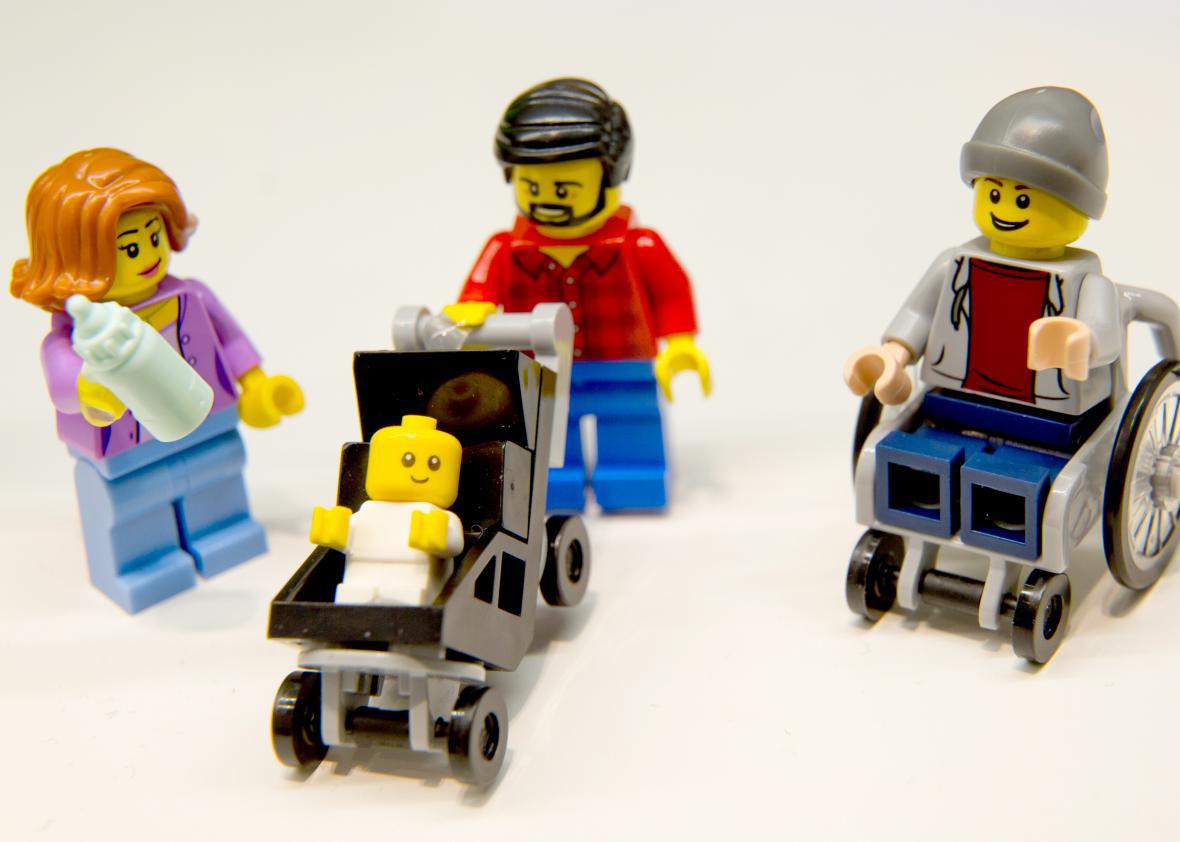Anyone frustrated by sexual politics in grown-up land might want to take a break and visit their local toy store. Manufacturers of children’s goods are increasingly ditching old-fashioned notions of what play should mean for a boy or a girl, offering up a vision of the world that’s far more progressive than the one we actually live in. The latest gesture toward utopia is new stay-at-home dad figurine from Lego. Donning a buffalo-plaid flannel shirt and a scruffy beard, this dad is part of a Lego City set that also includes a baby in a stroller and a mom wearing work clothes.
Soren Torp Laursen, president of Lego Systems, told Fortune that the company made the toy in an attempt to “stay in tune with the world around us.” “We aren’t responding to a demand from anyone,” he added. (A comment I’m taking personally on account of the demand I made for a stay-at-home dad Lego figurine last year.)
But in spite of Laursen’s reluctance to play rabble-rouser, there is a whiff of the aspirational and revolutionary in the launch of the new figurine. Stay-at-home dads might be increasingly common, but they are far from the norm. According to Pew research, the number of stay-at-home dads in the United States grew from 1.1 million to 2 million between 1999 and 2012. Of the 16 percent of families in which dad is the stay-at-home parent, only 21 percent have fathers who say they are staying home because they want take care of their children. The other 79 percent are at home because they are unable to find employment, are ill or disabled, or in school. In other words, only 3 percent of families have stay-at-home dads who are at home because they want to be the primary parent. As a comparison, 73 percent of stay-at-home moms say they are at home “specifically to care for their home or family.” This tendency for women to be more focused on care work than men appears in dual-working households, too. Even when both partners have full-time jobs, the bulk of the responsibilities related to child-rearing continue to fall on Mom.
The beauty of the Lego figurine is that the children playing with it don’t necessarily need to think about who is bringing home the bacon in their imaginary Lego family: The image of the father pushing the stroller and the mother heading to work is enough to get them imagining a wider range of possibilities in terms of which parent is responsible for what. As I pointed out before, pictorial descriptions on Lego playhouses often feature dad on a different floor than the rest of his family. Now, not only do children have an example of a Lego family in which the dad can see his wife and children, but he is actually engaging with them too.
Another great aspect of the way Lego is launching the new figurine is how it’s being marketed to both genders. By making it part of their City collection—as opposed the successful and somewhat controversial Friends collection for girls—Lego is inviting boys and girls into the world of imaginary domestic play. There’s been a lot of effort in making traditionally boys’ toys more appealing to girls in recent years, but not much of the other way around. This has left boys with few nonpink aisle toy options that encourage them to explore domestic life and caring for others.
The movement for gender equality will never be complete until we get everyone, and everyone includes men, to stop devaluing care work. Lego hipster dad pushing a stroller down the sidewalk is definitely a small, plastic step in the right direction.
